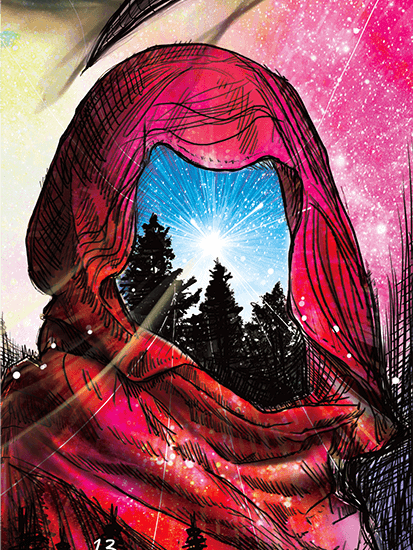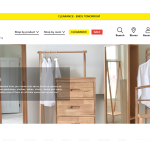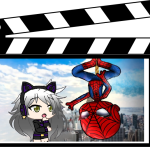The Tarot is a fascinating blend of art, psychology, probability theory and history and I absolutely love it.
Recently, I was designing a Tarot app, to demonstrate the design principles contained in my online human-computer interaction course, when I realised how much the Tarot contains many themes I love to blog about. I got so excited that I am now learning flutter and dart to code up my design and test it out.
There are 78 cards in the Tarot and each card has a specific meaning. As a reader, I lay them out and interpret them rather like creating a storyboard to tell a story, or making up a story to make sense of a situation that I am trying to figure out, which is what we all do, I love to say that we are all social psychologists.
Each card is archetypal in nature and brings its own energy. Archetype means first made and they are used in everything from design schemas to marketing. We recognise them consciously and subconsciously, for we grew up with them in stories and fairytales so much so that they often occur in our dreams. By using an archetype to communicate we bypass our thinking and go straight to our intuitive mind and feelings, which is probably why people use the Tarot for divination. The idea of trying to represent this as code and puzzle it out is very appealing to me, especially as there are so many permutations of story in 78 cards in different spreads.
As we age, we can get a bit jaded and think: I’ve seen it all before. How often do we recognise the story we are in? Is this because we are really in it? Or, does it feel similar to something we have already experienced before? Are we interpreting something new with old eyes and fulfilling our own prophesy of Oh I know how this will end? Or, is there really nothing new under the sun?
In our technologically driven present, we are in love with big data as we are hoping to find a new story in old data. We want transformation, and the possibility of change and potential which reminds us of our youth when everything seemed possible, which is why I believe society worships youth because of that boundless shakti energy that we seem to lose as we get older and fixated on our daily grind.
The Tarot has 78 cards. There are 22 major arcana which, it is said, map out the journey of life with its major milestones from THE FOOL (0) to THE WORLD (XXI) and back round again and again, into infinity. The 56 minor arcana cards are concerned more with our day to day affairs, our thoughts and communications (swords), ideas and passions (wands), health and wealth (pentacles) and our emotions and relationships (cups). Card interpretation is often unrestricted by language barriers or semantics as we all have similar human needs and desires and the numbers 0-9 all have meanings too as defined in numerology: 1 is a beginning and we step up through the solid perhaps boring 4, conflict and difficulties of 5, movement of 6, struggle and moment of change of 7 (is that why 7 is considered lucky?), infinite 8, fulfilled but could go either way 9, the final 10 – completion of a cycle.
Take card XIII which is the image above in The Lightseer’s Deck by Chris-Anne. In Tarot, XIII is the major arcana card of DEATH. It doesn’t meant a literal death, it just means an ending and Chris-Anne has actually called the card Death and Rebirth with the lemniscate (which WordPress just doesn’t want to display correctly no matter which ASCII code I choose), or symbol of infinity, because new beginnings often occur after there is an ending, whether we resist it or not which is why I believe that XIII is still considered to be an unlucky number. Just last week we had another Friday the 13th, which trended on Twitter, and I grew up on a new build 70’s housing estate where there were no houses or flats with the number 13. It was considered too unlucky and nobody wanted to live in them.
Whether we think we do, or not, we know the meanings of the cards already. They have resonance: emotional (LOVERS VI, II of CUPS) and nostalgic (VI of CUPS), reminding us of that all important connection (III of PENTACLES) to others and the sadness when it ends (V of CUPS, III of SWORDS) and the joy when we have it along with our desire for good health and wealth (X of PENTACLES, X of CUPS, THE SUN XX) and those unhealthy times when we are self-sabotaging (THE DEVIL XV) and life come crashing down around us (THE TOWER XVI, V of PENTACLES). I could go through the whole deck naming the cards but this paragraph is hard work to read already as is.
The art of Tarot is powerful stuff so I was delighted when I realised how many blogs I have written at sometime or other as I try to work make sense of the world which is what we do in story, in life, games and game theory. We want to trick or outrun fate and take charge of the game, and what is the Tarot if not a game about fate? I love pondering all of these connections between body and mind, heart and head, power and fate, destiny and probability and so on, in my usual computational binary way.
I also believe that as we are social conditioned from birth to fit in and studies have show that our culture can biologically change us, so it makes sense to me that we share energy. But I am not so sure that our fate is predestined. I think we follow the patterns we have known and learnt as children. Some talk about our destiny being written in the stars and moon and planetary alignments, I think it’s more likely to be in our psychological make-up and our desire to make our dreams come true whatever they may be – but they are normally of wanting to be seen, heard and feel like we matter. One of my favourite Tarot readers on YouTube Luckii Sevens Tarot said that when we write down our desires and goals, we speak and write them into existence like casting a spell. They call it spelling because you write it down. I love how something as prosaic as learning to spell can be made mystical and magical by the Tarot and as much as I love watching Tarot readings on YouTube I have for a while wanted to do my own.
Inspired by Google who bought YouTube in 2015, to analyse all the speech, I have recorded my reading Tarot and thinking about stories, patterns and feelings, in the hope of coding up what I’ve learnt into a nice Tarot app using their TensorFlow framework.






